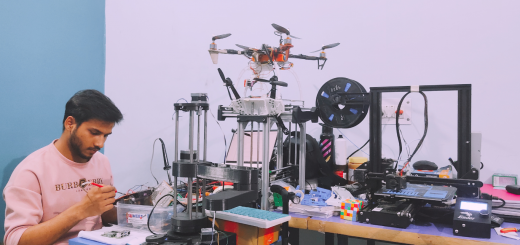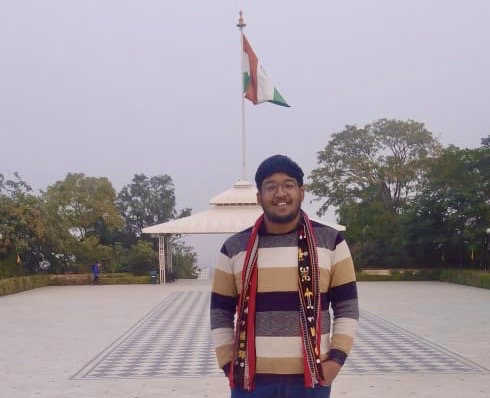German govt awards UPES student for device that plugs oxygen leakage

The metropolitan region of Hanover Braunschweig Göttingen Wolfsburg, Government of Germany, organised the International Health Competition: HealthHack 2021 to tackle various challenges in the healthcare sector. Suraj Singh, a student from UPES School of Engineering, won the prize for designing a device that reduces oxygen wastage and leakage
When the wastage and leakage of oxygen in hospitals became a matter of concern during the second wave of COVID-19, Suraj Kumar Singh, a student at UPES School of Engineering, proposed an effective solution to minimize the wastage, leakage, and misuse of oxygen at all levels and ensure the best utilization of oxygen for patients.
Recognising his innovation, the Metropolitan region of Hanover Braunschweig Göttingen Wolfsburg, Government of Germany, awarded Suraj with a prize money of 750 EUR at the International Health Competition: HealthHack 2021.
HealthHack 2021, the fourth edition in the series, was organised to tackle various challenges in the healthcare sector. The event had 223 participants from 39 countries, 20 submitted projects, three winning teams and an audience award.
The judging was conducted by Kai Florysiak, Management Metropolregion GmbH, Germany; Rifat Fersahoglu-Weber, Chairman of the AWO district association in Braunschweig, Germany; Prof. Dr. Thomas M. Deserno, Deputy Executive Director of the Peter L. Reichertz Institute; Raphael Koßmann, Head of Regional Contracts, Lower Saxony at TK Dirk Engelmann Head of TK State Representation Lower Saxony.

Talking about the motivation behind building this technology, Suraj said, “The world is going through a severe health crisis, and in today’s era of innovation, the youth can help overcome the challenges posed by the pandemic by being problem solvers and creating solutions.”
“I was watching the news and saw that there was an oxygen gas leakage while transferring from the Capsule Mobile Tank to a hospital in Maharashtra. I wanted to contribute my bit for mitigating the suffering around me. This is when I started brainstorming, read various books and started thinking of a low-cost and productive method that could be implemented immediately,” he added.
Suraj had his eureka moment when he noticed that his household gas cylinder was leaking. “The cylinder was making an audible hissing sound, and I inferred that if the leakage is too low, it would at least generate an ultrasonic noise source that is distinguishable from mechanical noise sources,” he said.
“I decided to design an acoustic camera that can be used to detect the sources of these noises by increasing the number of microphones. I also created multiple layers of wide array microphones to capture the leakage. I aimed to make the leakage (sound of leakage) visible through the coordination of camera and microphone,” Suraj explained.

Suraj conceptualised the design of a Low-Cost High-Sensitivity Acoustic Camera under the guidance of Dr. Rishi Dewan
Suraj conceptualised the design of a Low-Cost High-Sensitivity Acoustic Camera under the guidance of Dr. Rishi Dewan from the Department of Physics, School of Engineering. The equipment can detect Oxygen Leakage Hotspot when the patient is asleep with the oxygen mask as improper placement of mask on the face is the primary reason for oxygen leakage. Also, if the mask is not properly fixed, some amount of oxygen is not inhaled by the patient, and it is wasted. To compensate for the need of the patient, the flow rate of oxygen is increased which further increases the wastage of oxygen.
In addition, the device can also be used in transferring Liquid Medical Oxygen (LMO) from a capsule (mobile tank) to tanks installed in hospitals.
To capture the leakage sound, Suraj used a Dish Antenna to place the large microphones to create a web of microphones, increasing the sensitivity due to its concave shape. The equipment consisted of a camera for capturing the image, a group of digital microphones and a Raspberry Pi Model 3 to measure data from the digital microphones simultaneously and then transfer the data to a desktop post processing.
Suraj said, “I have proposed a 3D Model of the Design. During my research, I found that such devices are used in the Railway organisations in the US and Europe to detect leakage in the mobile tanks that are carried, and the result comes in the form of this image.”
“I believe that such technology needs to be worked on urgently to make the device available for immediate use, especially when we are currently in shortage of cryogenic tanks and oxygen is being transferred at a massive scale. When we start questioning the things around us, the quest for learning begins and leads to innovation. I had enrolled myself in the geosciences program but worked on projects from different fields such as aviation, automotive, blockchain, and many others,” he added.
Rishi Dewan, Department of Physics, UPES School of Engineering, said, “Nearly four years back in 2017 when I first interacted with Suraj in the classroom, I could easily differentiate him from others due to his technical and innovative approach in academics. He is brilliant in many fields and is known for his do-or-die attitude. During the pandemic when he had put forward his practical solution to tackle the oxygen crisis, I was excited to help and support him. This project seems to be technically sound, commercially viable, and can save human lives during this crucial time.”
Watch the full event here:




Thank you so much for all the support and guidance I got .
It was all what I was taught and provided at the University that I am able to innovate and do something fruitful for the problems around us.